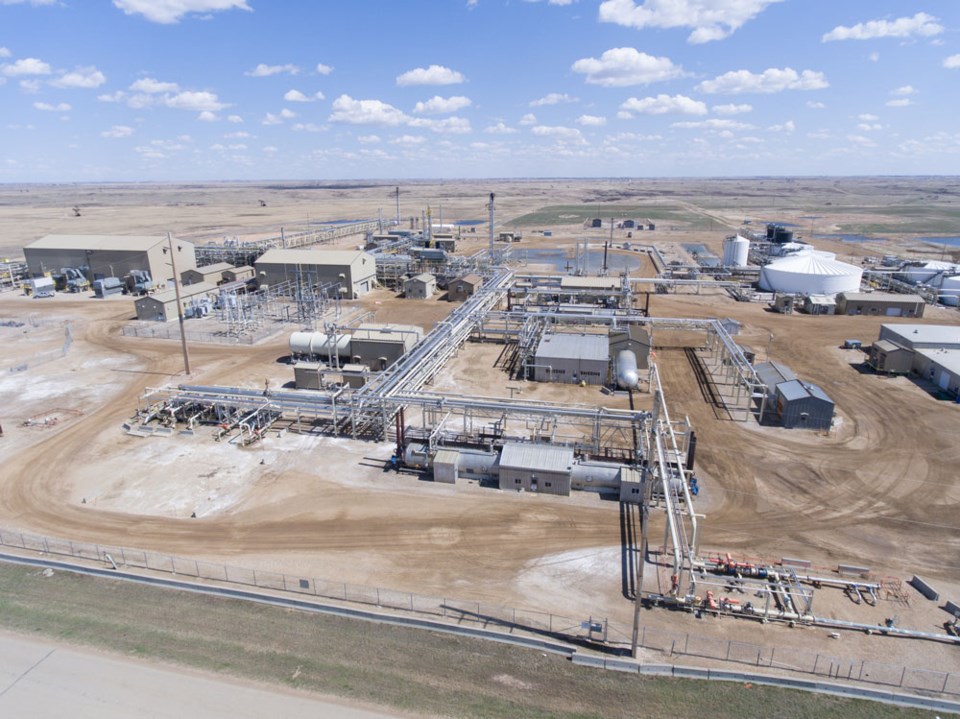One of the key questions regarding the future of coal-fired power generation in Saskatchewan is the future for carbon capture and storage. For there to be a future, there has to be a willing buyer of the additional captured CO2, beyond what is captured at Boundary Dam Unit 3. Who would that buyer be?
Whitecap Resources Inc. president and CEO Grant Fagerheim said they were interested. Indeed, he had just been to Regina to talk to government ministers about that exact issue.
Whitecap is the operator of the Weyburn Unit, with 62 per cent ownership. The Weyburn Unit is currently the sole purchaser of the carbon dioxide (CO2) coming out of the Boundary Dam Unit 3 Integrated Carbon Capture and Storage Project, at the other end of a 71-kilometre pipeline. There the carbon dioxide is used for enhanced oil recovery.
Fagerheim said, “I was just down in Regina two days ago, talking to the government about that. We want to continue to expand out the Weyburn project area, the CO2 recovery project. That means we need more CO2, not less. That means not just the Saskatchewan government, but we have to get the federal government to understand that.
“We are prepared to expand the project area, but we need a long-term security of supply. This back-and-forth between the provincial and federal governments – they can’t plan, we can’t plan. We would like to advance.
“We’re talking about an incremental $2 billion of capital to expand that,” Fagerheim said.
That would be Whitecap’s investment for their end, not SaskPower’s.
They would need a minimum 15 years of CO2, on top of what they have in place right now.
“Either we get it from there (Estevan) or we’re looking cross border as well. We’re looking at North Dakota. We’re looking at Wyoming as well. Why wouldn’t we do what’s best for Canadians? Right here! Job creation, opportunities, CO2 sequestration, advancing the largest project in the world. That’s what I was just down there, talking to Minister Eyre and Minister Duncan about,” Fagerheim said.
(Bronwyn Eyre is Minister of Energy and Resources, while Dustin Duncan is Minister of Environment and Minister Responsible for SaskPower, as well as С����Ƶ for Weyburn-Big Muddy.)��
“We want to continue to advance, and I think we can make some headway. The challenge they have right now, and I’m sympathetic to it, is that the federal government has said, ‘No more coal, no more coal.’
“Wait a second. If it’s responsibly developed, and we’re using the most advanced technologies available, what do you mean, shut down coal? Why would you shut down coal, with the recovery factors we’re getting today?”
He went on, “We’re using it to demonstrate. The Chinese are coming over to see us. The Qataris. The Saudis. The Kuwaitis. They’ve all be to see us here in the last six months. Yet you’ve got these federal government policies, saying, ‘No more coal, no more oil, no more natural gas.’ You can’t create energy out of Pixie Sticks.”
He said major companies are looking at carbon capture opportunities, and that includes interest from at least one other company in southeast Saskatchewan.
“We’re getting inundated all the time with potential to team up with other opportunities. I don’t think funding would be a problem. We want to expand the project area.”
He thinks SaskPower would want to expand, if there wasn’t this overarching concern about coal from the federal government.
“We would love to expand the footprint. For sure, we would.”
He said the Saskatchewan government is С����Ƶ very supportive, with open communication, trying to do what’s best for the residents of Saskatchewan. Alberta Premier Jason Kenney is doing the same in Alberta, Fagerheim added.
“We think the two provinces are very welcoming.”
Whitecap’s 2019 production guidance is 70,000 to 72,000 barrels of oil equivalent per day, company-wide, of which 85 per cent is oil and natural gas liquids. Their September 2019 corporate presentation notes their southeast Saskatchewan assets, the Weyburn Unit (which uses CO2-enhanced oil recovery), has recovered 33 per cent of original oil in place. It has a possible recovery factor of 47 per cent. The reserve life is expected to be in excess of 40 years.
��
��




